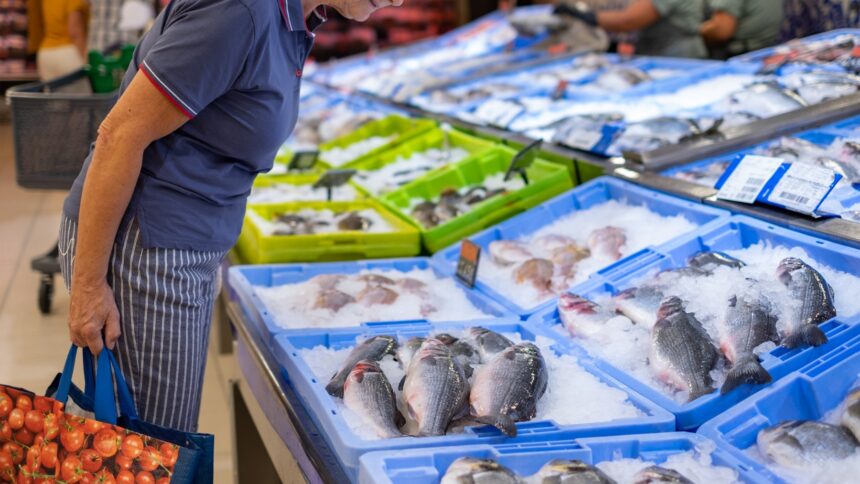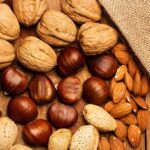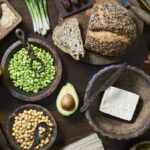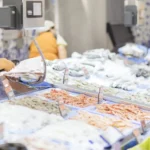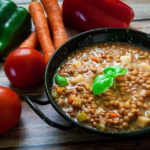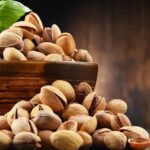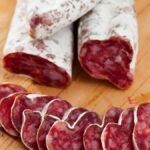It seems that we are a month away from Christmas, but the main days of the holidays are still just around the corner. No matter how much planning is done in advance, the truth is that many families will be closing their menus in the days leading up to the holidays and balancing to find dishes that everyone will like, that are special, that will not leave our pockets shaking and that have a healthy profile, that we can go overboard with nougat without accumulating guilt. These three new fish from Mercadona meet all these premises and that is probably why they are sweeping: langoustines, carabineros and prawns.
The medium-sized deep-frozen Hacendado langoustine has been one of the most celebrated novelties of these dates, which can also be found in large size. Both are marketed in 500 gram boxes and cost 10.65 and 13.30 euros respectively, an economical option compared to the prices of fresh seafood, which also continue to rise as we approach Christmas Eve. These come raw and are distributed by Globalimar Europa, based in Girona, with only the langoustine (Nephrops norvegicus) and the usual preservatives in these cases appearing in the list of ingredients.
They are caught with trawl nets in the Northwest Atlantic, mainly in Ireland and Scotland. Its nutritional information highlights that 100 grams provide only 86 calories, 1.1 grams of fat (0 grams of saturated fat), 17.5 grams of high value protein, 0.18 grams of salt and 0 grams of carbohydrates. The Spanish Nutrition Foundation (FEN) also emphasizes that Norway lobsters are very rich in minerals such as calcium (220 milligrams), iodine (90 micrograms), sodium (146 milligrams), potassium (266 milligrams), phosphorus (259 milligrams) and selenium (130 micrograms).
Norway lobsters, an accessible whim
Caution, however, for people with high cholesterol, because it adds 200 milligrams per 1,000 calories. The FEN considers that its proteins are the main nutrient to highlight, along with a high content of omega-3 fatty acids, which are present in the amount of 0.388 grams. Finally, this seafood also provides B vitamins. In addition, they are very easy to prepare to take advantage of them: it is enough to cook them with a little light mayonnaise or to grill or bake them with a mixture of lemon, garlic, oil and parsley that we will spread on top.
Secondly, we find that another of the novelties is the frozen Hacendado Carabinero, a seafood of which there is not much in Spain and that is why it is a select and highly valued snack also in smoked and rice dishes. It comes in a box of about 500 grams for 65 euros, also more affordable than fresh and a way to have it on the table even if you do not live near their catch areas in the Mediterranean and the South Atlantic, in Andalusia. It is packaged by Mariscos Rodríguez, from the Huelva town of Palos de la Frontera.
Carabineros, a select shellfish
In its list of ingredients we find the carabineros and its usual preservatives when the seafood comes frozen, in this case antioxidants diphosphates, sodium citrates, citric acid and sodium metabisulfite. They have been caught by trawling nets and have been frozen on board, thus guaranteeing better preservation. In their nutritional value table they report 168 calories per 100 grams, almost double that of the Norway lobster, with 42 grams of fat (1.1 grams of saturated fat), less than 0.1 grams of carbohydrates, 16.8 grams of protein and 1.6 grams of salt, a slightly excessive amount if we look at the WHO maximum of 5 grams per day.
Cryptographic newsThe FEN focuses on its proteins of high biological value, its omega 3 polyunsaturated acids (0.25%) and, again, its cholesterol: 152 milligrams per 1,000 grams in this case. As for minerals, they are a source of phosphorus (25% of the recommended daily amounts), 79 milligrams of calcium, 190 milligrams of sodium, 330 milligrams of magnesium and group B vitamins, especially B12. In fact, one serving of carabineros represents half of the recommended intake of this vitamin.
The shrimp, the king of Christmas Eve
Finally, although the Large Frozen Prawn is not in itself a novelty like the previous two, its price is, since Mercadona has launched it in an offer in which you save two euros: from 19.90 to 17.90 euros per 2 kilo box. How is it different from prawns and shrimp? This is perhaps the million-dollar question and we have to pay attention to the fact that these decapod crustaceans are distinguished by their heads (the shrimp have a larger head and the shrimp smaller), their color (the shrimp is pinker, the shrimp paler and the shrimp more orange) and the flavor.
The prawn and prawn have a milder flavor and the prawns are more intense, perfect for grilling, also taking into account that their meat is the most tender of the three. Those from Mercadona are packaged by Dimarosa, from Palos de la Frontera (Huelva) and among its ingredients it distinguishes shrimp (Pleoticus tumbari) and typical preservatives. In its nutritional value they indicate 87 calories per 100 grams, almost like crayfish, 0.5 grams of fat (0.1 grams of saturated fat), 0.5 grams of carbohydrates, 21 grams of protein and 0.66 grams of salt.
The FEN says that shrimp have a high nutritional value and a low fat content, although it also warns of high cholesterol levels. Its proteins are again highlighted for being of high biological value and are a source of iron, magnesium, phosphorus, iodine and selenium, as well as vitamin B12. They can be used, as we said, to make either grilled or baked with that mixture of lemon, garlic, extra virgin olive oil and parsley, or they can also be used cooked for a fresh and light cocktail, among many other preparations that They talk to us in Cocinillas.

